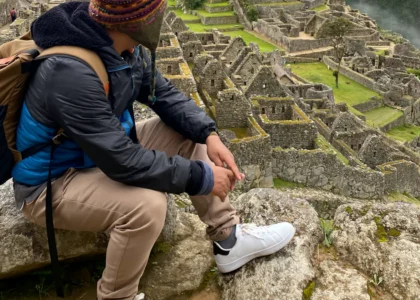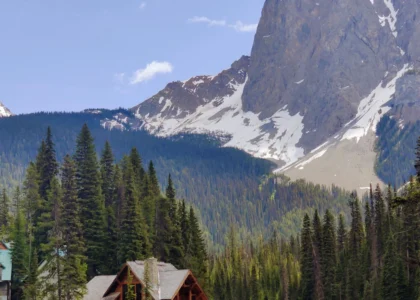Welcome to Utah’s Hiking Paradise
Welcome to the breathtaking hiking paradise of Utah! With its diverse landscape and stunning natural beauty, Utah is a hiker’s dream destination. The state offers a wide range of hiking experiences, from the iconic red rocks to the majestic high peaks, making it an ideal location for both adventure seekers and families alike.
Why Utah is a Hiker’s Dream
Utah’s landscape diversity sets it apart as a prime hiking destination. The state is home to five U.S. National Parks, each offering unique terrain and scenic trails. From the otherworldly rock formations of Arches National Park to the towering cliffs of Zion National Park, Utah presents an unparalleled variety of landscapes for hikers to explore.
Choosing Your Adventure: What’s Your Hiking Style?
When it comes to hiking in Utah, there’s something for everyone. Whether you’re a thrill-seeker looking for a challenging ascent or seeking family-friendly trails for a fun outdoor adventure, Utah has it all.
Thrill-Seeker or Family Fun?
For thrill-seekers, heart-pounding hikes like Angels Landing await, offering adrenaline-pumping challenges and awe-inspiring views. On the other hand, families can enjoy leisurely strolls through picturesque canyons and valleys, creating unforgettable memories amidst nature’s wonders.
Adventure Trails in Utah
Utah’s adventure trails offer a thrilling and unforgettable experience for hikers seeking an adrenaline rush amidst breathtaking natural landscapes. Two iconic trails that stand out for their unique challenges and stunning views are Angels Landing and The Narrows.
Angels Landing: A Thrilling Climb
Angels Landing is renowned for its heart-pounding ascent and awe-inspiring vistas, making it one of the most sought-after hikes in Utah. The trail presents a thrilling challenge, with steep ascents and narrow ridges that test the mettle of even the most experienced hikers.
The Challenge and the View
The hike to Angels Landing is not for the faint of heart. As you ascend, the trail becomes increasingly challenging, requiring careful navigation along exposed cliffs and narrow pathways. However, the reward at the summit is unparalleled, offering panoramic views of Zion Canyon that will leave you in awe.
According to multiple hikers interviewed, the hike to Angels Landing is described as one of the most dangerous and challenging in the country, with 200,000 permits issued in 2022. Despite its reputation as a daunting climb, it is recommended to continue hiking up the West Rim Trail past Scout Lookout for even more spectacular views.
Safety First: Navigating Angels Landing
Safety precautions are paramount when tackling Angels Landing. Hikers are advised to be well-prepared with sturdy footwear and ample water due to the strenuous nature of this trail. Additionally, staying mindful of weather conditions and heeding park guidelines are crucial for a safe and enjoyable trek.
The Narrows: Hike Through Water-Carved Canyons
For those seeking a unique adventure through captivating natural formations, The Narrows offers an exhilarating journey through water-carved canyons unlike any other.
What to Expect in The Narrows
Hiking through The Narrows entails wading through ankle-deep or waist-high waters within towering canyon walls, creating an immersive experience amidst nature’s grandeur. The ever-changing landscape presents a series of challenges that require both physical stamina and mental fortitude.
The Zion Information Guide pamphlet classifies Angels Landing and The Narrows as ‘strenuous’ trails. Despite its challenges, it is estimated that about 1,000 people hiked The Narrows daily during peak seasons.
Gear and Preparation for The Narrows
Proper gear is essential for traversing The Narrows, including sturdy water shoes or boots designed for wet conditions and walking sticks for stability on uneven terrain. Adequate hydration and protective clothing against sun exposure are also vital considerations for this invigorating adventure.
Family-Friendly Hikes in Utah
Utah’s natural wonders aren’t just for the thrill-seekers; there are also plenty of family-friendly hikes that offer breathtaking views and memorable experiences for everyone. Whether you’re embarking on a hike with young children or looking for a more leisurely adventure, Utah has something to offer for families of all ages.
Observation Point: Breathtaking Views for Everyone
One family-friendly hike that stands out for its accessibility and stunning vistas is Observation Point. This trail provides an opportunity for hikers of all ages to enjoy panoramic views of Zion National Park without the strenuous challenges of more advanced trails.
Easier Paths to the Top
The hike to Observation Point features well-maintained paths and gradual inclines, making it suitable for families with children. The ease of access allows everyone to partake in the joy of reaching the summit and taking in the awe-inspiring scenery together.
What to See Along the Way
As you make your way up to Observation Point, keep an eye out for diverse flora and fauna that thrive in this unique ecosystem. The trail offers glimpses of vibrant wildflowers, towering rock formations, and perhaps even sightings of local wildlife, providing an enriching experience for nature enthusiasts of all ages.
Kanarra Canyon & Falls: A Hidden Gem
For families seeking a hidden gem amidst Utah’s natural splendor, Kanarra Canyon & Falls offers a delightful adventure filled with wonder and discovery.
The Beauty of Kanarra Creek
Traversing through Kanarra Creek, hikers are treated to enchanting sights of cascading waterfalls, lush vegetation, and captivating red rock formations. The gentle flow of the creek creates a serene ambiance that is perfect for families looking to immerse themselves in nature’s beauty.
Tips for a Family-Friendly Adventure
Based on personal experiences shared by fellow hikers, including those who embarked on this journey during family reunions, it’s evident that Kanarra Canyon & Falls is well-suited for young adventurers. Children are enthralled by the opportunity to wade through the refreshing waters and marvel at the wonders concealed within towering red rock walls.
Incorporating these family-friendly hikes into your Utah itinerary ensures that everyone can participate in creating cherished memories amidst some of nature’s most spectacular landscapes.
Safety Tips and Preparation
When embarking on a hiking adventure in Utah, it’s crucial to prioritize safety and be well-prepared for the varying terrain and conditions you may encounter. Here are essential tips and preparations to ensure a safe and enjoyable hiking experience.
Essential Gear for Utah Hikes
What to Pack for Different Trails
Packing the right gear is essential for a successful hike in Utah. Depending on the trail’s difficulty level and duration, hikers should consider carrying essential items such as a trail map, compass, first-aid kit, insect repellent, Moleskine, tweezers, and antibacterial ointments. Additionally, adequate water (2-3 liters) and high-energy snacks like trail mix and energy bars are vital for sustaining energy levels during the hike.
Staying Hydrated and Sun-Protected
Given Utah’s diverse landscapes and often sunny weather, staying hydrated is paramount. Hikers should carry a water purification system or tablets for longer hikes and wear UPF clothing to protect against intense sun rays. Sunglasses, a brimmed hat, and sunscreen are also indispensable for shielding against UV exposure.
Know Before You Go: Trail Etiquette and Safety
Respecting Nature and Fellow Hikers
Maintaining respect for nature by adhering to Leave No Trace principles is fundamental. This includes properly disposing of waste, staying on designated trails, minimizing noise pollution, and refraining from disturbing wildlife. Additionally, being courteous to fellow hikers by yielding on narrow paths and sharing the trail fosters a positive hiking environment.
Emergency Preparedness and Navigation Tips
Carrying the Ten Essentials is not only important for emergencies but also serves as valuable tools during the hike. These essentials include navigation tools like maps and compasses, extra clothing layers for changing weather conditions, illumination sources such as headlamps or flashlights, as well as emergency shelter options like lightweight tarps or bivvy sacks.




